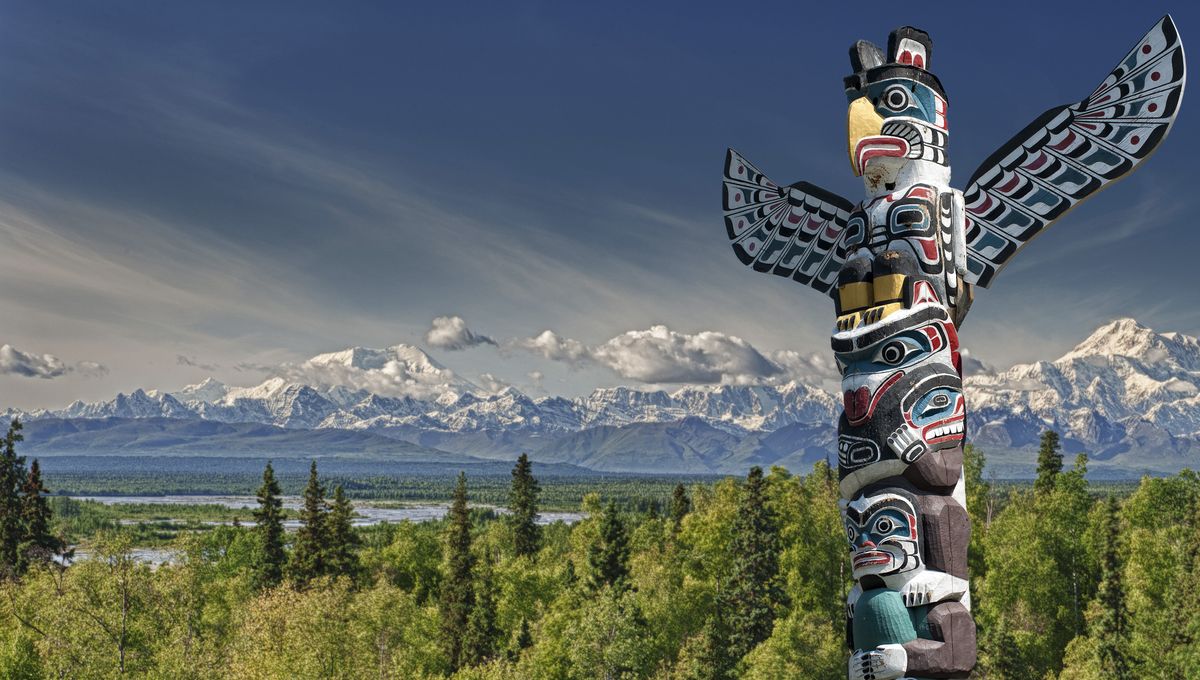
Despite being the last continents on Earth to be inhabited by humans (excluding Antarctica), the Americas are thought to have been home to around half of all language families ever spoken. Tracing these dialects back to their prehistoric roots, the author of a new study has revealed that every North American language can be linked to one of two ancient Siberian mother tongues, which were brought to America 24,000 and 14,000 years ago respectively.
In the millennia before the first words of English, Spanish, French, or Dutch were uttered on North American soil, the continent was abuzz with the sound of around 200 separate language families, making it an incredibly verbally diverse region. The first of these vernaculars is thought to have been imported when glaciation opened up a passage from Siberia to Alaska in the late Pleistocene, although how this language spread and evolved over the years is a difficult story to tell.
In an attempt to unravel this oral history, renowned linguist Johanna Nichols from the University of California, Berkeley, compared the semantic features of 60 different North American languages spanning all language families and the entire geographical range of the continent. To group these languages together, Nichols looked at “16 linguistic structural features that are known or likely to be good markers of families, areas, or underlying types.”
Examples of such features include gendered nouns, numeral classifiers, and n-m pronouns, whereby the first-person singular pronoun has an “n” as its first consonant while the second-person singular form has an “m” instead.
Ultimately, Nichols was able to trace all languages back to two founding populations, the first of which appeared along the west coast of North America with two waves of Siberian immigrants that arrived 24,000 and 15,000 years ago. At a time when glaciation made human settlement north of the Columbia River impossible, these two groups of newcomers mingled in California and Oregon, giving rise to the first distinct group of American languages.
According to Nichols, this dialect is notable for its prominent use of n-m pronouns and preceded the arrival of the second Siberian language type, which appeared among the first inland communities following the formation of an ice-free corridor around 14,000 years ago. Characterized by polysynthesis – whereby sentence-like words can be built by stacking up affixes – this second founder population gave rise to the languages spoken by the famous Clovis culture which occupied parts of North America prior to 10,000 BCE.
Speakers of these dialects then mixed with a fourth wave of Siberian entrants around 12,000 years ago, ultimately giving rise to a family of languages that were distinct from those spoken in California and Oregon, and which became the lingua franca of the earliest settlers of the Pacific Northwest.
Overall, therefore, Nichols concludes that “structural profiles imply that two linguistically distinct and internally diverse ancient Siberian linguistic populations provided the founding American populations.”
Amazingly, she writes that “the dominant structural properties among the founder languages are still reflected in the modern linguistic populations,” which means the distribution of North American languages continues to be defined by the ancient glaciation events that led to the opening of these entry windows.
The study has been published in the American Journal of American Anthropology.
Source Link: What Language Did The First People In North America Speak?